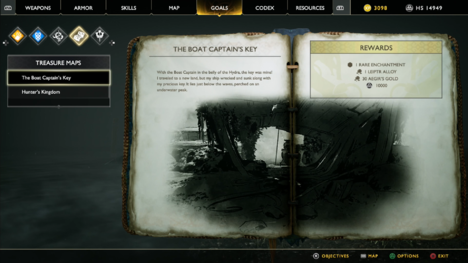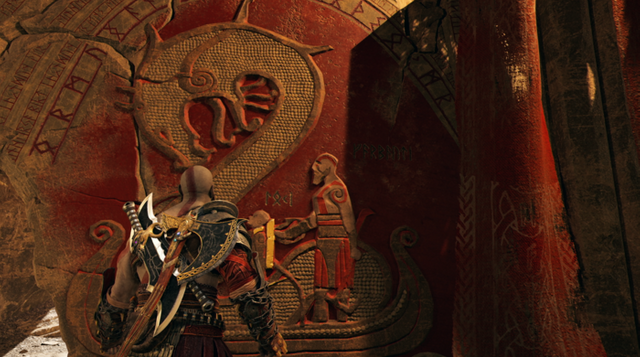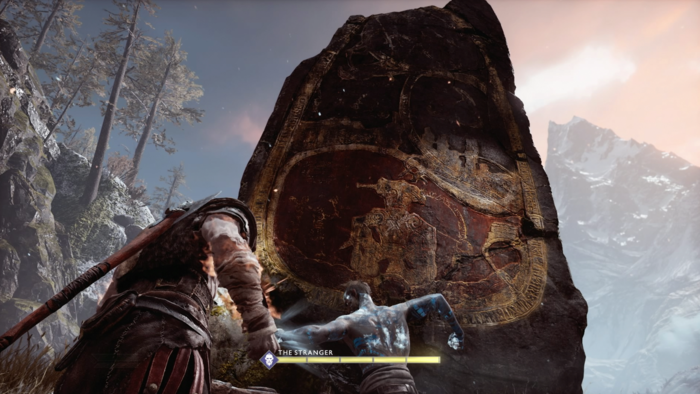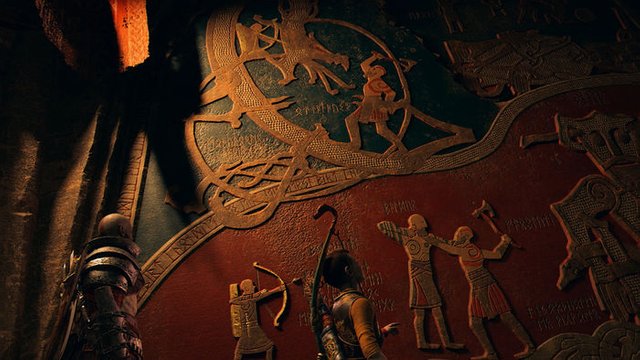The Boat Captain Returns, Sorta :
In the very first God of War game, the opening takes place out at sea and Kratos must kill the infamous Hydra. After the fight Kratos enters the Hydra's mouth to retrieve a key from the boat's captain. Kratos kicks the captain down into the belly of the beast after retrieving the key.
This Boat Captain appears again at the end of the game, as well as in God of War II and a brief mention in God of War III. One may even say it isn't a God of War game without the legendary Boat Captain.

At Stone Falls there is a treasure map titled "The Boat Captain's Key." The text on the map directly calls out the Hydra and Captain. It's a fun, little callback to the games of the past.
..........................................................................................................................................
Post Game Secrets and Easter Eggs :
Where Kratos Fits Into Norse Lore
Kratos may be a fish out of water - a Greek God thrown into the world of Norse Mythology, but in fact he's more at home than you might think.
In the mural room at Jotunheim, you'll find that many of the pictures have associated names next to the characters - spelled out in the Runic Alphabet, used to write various Germanic Languages.

In the murals that depict the father and son, you'll see Atreus bear the name: ᛚᛟᚲᛁ - which translates to
Loki
However, Kratos has quite a different name, one you may not be familiar with. The mural shows the name next to the God of War as ᚠᚨᚱᛒᚨᚢᛏᛁ - which translates to "Farbauti". This might not sound like much, but it's actually a name with meaning. According to poems from the Viking era and Norse literature, Farbauti is in fact a Jotnar - or giant - and not just any Jotnar, but the husband of Laufey and father of Loki himself.
Kratos' insertion into the Norse lore sort of checks out in this regard. While he may not be a giant, he is indeed the husband of Laufey, or Fae, as he calls her in the game. This also makes sense considering what we find out about Atreus in Jotunheim and his other name.
A Prophecy Hidden in Plain Sight :
When you arrive at Jotunheim and reveal the murals of prophecy that fortold your entire adventure - you may be surprised to find this isn't the first time you've seen these.
Recall back to your first fight with "The Stranger". There comes a point where you unleash Spartan Rage and throw him against a large stone slab that you eventually slam onto your opponent.

However, this giant stone is covered in writing - and not just any writing. If you step back during the battle (you'll be basically invincible with Spartan Rage during this point), you can admire the giant stone to see the very same murals that were in Jotunheim (although faded).

that depict - among other things - your final battle with the very same person you're currently fighting.
You can also see the mural of the giant, Thamur, and up in the top right corner the part where you sail out of Helheim on a flying boat!
Hi! I am a robot. I just upvoted you! I found similar content that readers might be interested in:
http://www.ign.com/wikis/god-of-war-2018/Easter_Eggs_and_References
Downvoting a post can decrease pending rewards and make it less visible. Common reasons:
Submit